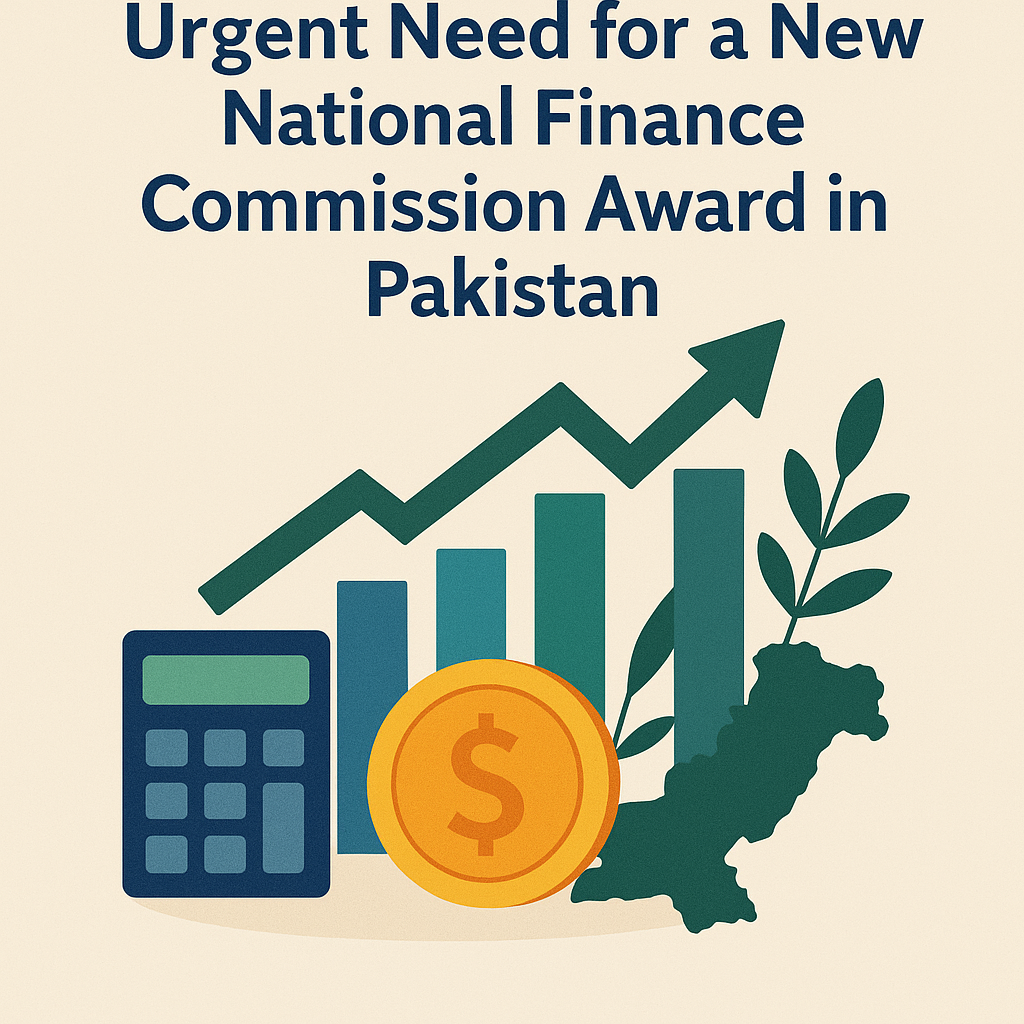
Pakistan’s fiscal landscape, burdened by mounting debt, inflationary pressures, and stagnant growth, is at a crossroads. At the heart of these challenges lies an outdated framework for resource distribution: the 7th National Finance Commission (NFC) Award, finalized in 2010. While the award was hailed as a landmark achievement for its progressive increase in provincial shares—from 47.5% to 57.5% of the federal divisible pool—it has failed to adapt to the country’s evolving economic realities. Over a decade later, the absence of a fresh NFC Award is exacerbating interprovincial inequities, constraining development financing, and undermining cooperative federalism. The urgency for a revised, equitable, and transparent formula cannot be overstated.
The 2010 NFC Award was crafted in a markedly different economic context. At the time, Pakistan’s debt-to-GDP ratio stood at 55%, provincial responsibilities were narrower, and climate-induced disasters had not yet exposed the fragility of regional infrastructure. Today, the debt-to-GDP ratio exceeds 75%, provinces shoulder expanded obligations under the 18th Constitutional Amendment, and recurrent floods have devastated rural economies. Critically, the existing award relies disproportionately on population (82% weightage) as the primary criterion for distributing resources among provinces, neglecting pressing factors such as poverty levels, revenue generation, and development gaps. This one-size-fits-all approach has left smaller provinces like Balochistan—which contributes minimally to revenue but faces acute underdevelopment—trapped in a cycle of dependency. Meanwhile, Punjab, despite its larger population, grapples with its own fiscal strain, as urbanization and migration stretch public services thin.
Compounding these disparities is the federal government’s shrinking fiscal space. With debt servicing consuming 54% of federal revenues in 2023-24, the centre struggles to meet its obligations, from defence to infrastructure projects. This has intensified competition over the divisible pool, with provinces arguing that their constitutional right to a 57.5% share is eroded by indirect taxes and off-budget allocations. The resulting vertical imbalance—where provinces bear 70% of public service delivery but rely on federal transfers for 85% of their revenue—has stifled localized decision-making. For instance, Sindh’s push for climate-resilient agriculture or Khyber Pakhtunkhwa’s post-flood reconstruction efforts remain chronically underfunded, as stagnant NFC allocations collide with rising costs.
The consequences of delaying a new NFC Award are stark. Interprovincial tensions, already visible in disputes over water rights and energy distribution, risk escalating into broader political friction. Economically, underfunded provinces are forced to rely on costly bank borrowings, crowding out private sector credit. According to the State Bank of Pakistan, provincial borrowing surged to PKR 1.2 trillion in 2023, diverting funds from development projects. This fiscal strain is mirrored in human development outcomes: Balochistan’s education budget, for example, covers only 40% of its needs, perpetuating a literacy rate of 43%—the lowest in South Asia. Without recalibration, such disparities will deepen, undermining national cohesion and the constitutional vision of equitable development.
A revised NFC Award must address these gaps through a multi-dimensional formula. Population, while relevant, should be balanced with indicators like poverty incidence (15% weightage), inverse population density (10%), and revenue generation efficiency (10%). This would direct resources to regions where need outstrips capacity, such as Balochistan’s sparsely populated districts, where delivering healthcare and education costs three times more than in Punjab. Additionally, introducing a climate vulnerability index (5%) could channel funds to areas facing environmental risks, aligning with global practices in countries like Indonesia and Bangladesh. Transparency mechanisms, such as independent audits of provincial expenditures and a publicly accessible NFC dashboard, would bolster accountability, addressing concerns over mismanagement that often hinder consensus.
Critics argue that expanding criteria might ignite conflict over “fair” weightages. However, the 18th Amendment’s mandate for a new NFC Award every five years provides a constitutional basis for iterative adjustments. Learning from India’s Finance Commission, which uses tax effort and forest cover as criteria, Pakistan could adopt a dynamic model reviewed biennially. This would allow incremental shifts rather than disruptive overhauls, fostering trust among stakeholders.
Simultaneously, the federal government must expand the revenue pie. Tax reforms targeting agriculture and retail sectors—which contribute less than 5% to GDP despite comprising 40% of the economy—could inject PKR 800-900 billion annually into the divisible pool. Streamlining the Federal Board of Revenue’s administration and ending preferential treatments for elites would further enhance collections. These measures, coupled with austerity in non-development spending, could alleviate federal-provincial tensions over resource scarcity.
The political will to act is paramount. Past delays have been attributed to fears of electoral backlash or bureaucratic inertia, but the cost of inaction now outweighs these risks. As noted by Dr. Kaiser Bengali, a veteran economist, “The NFC is not just about numbers; it’s about solidarity. A fair award is the glue holding Pakistan’s federation together.” International institutions like the IMF have echoed this, linking fiscal sustainability to improved subnational governance in recent consultations.
Pakistan’s journey toward stability and equitable growth hinges on modernizing its fiscal federalism framework. A new NFC Award, designed with flexibility, transparency, and equity at its core, would not only address immediate financial pressures but also strengthen the social contract. By investing in provincial capacities today, the federation can unlock tomorrow’s potential—a future where regional disparities diminish, resources drive innovation, and collective progress becomes inevitable.
This article was published on publicfinance.pk.
